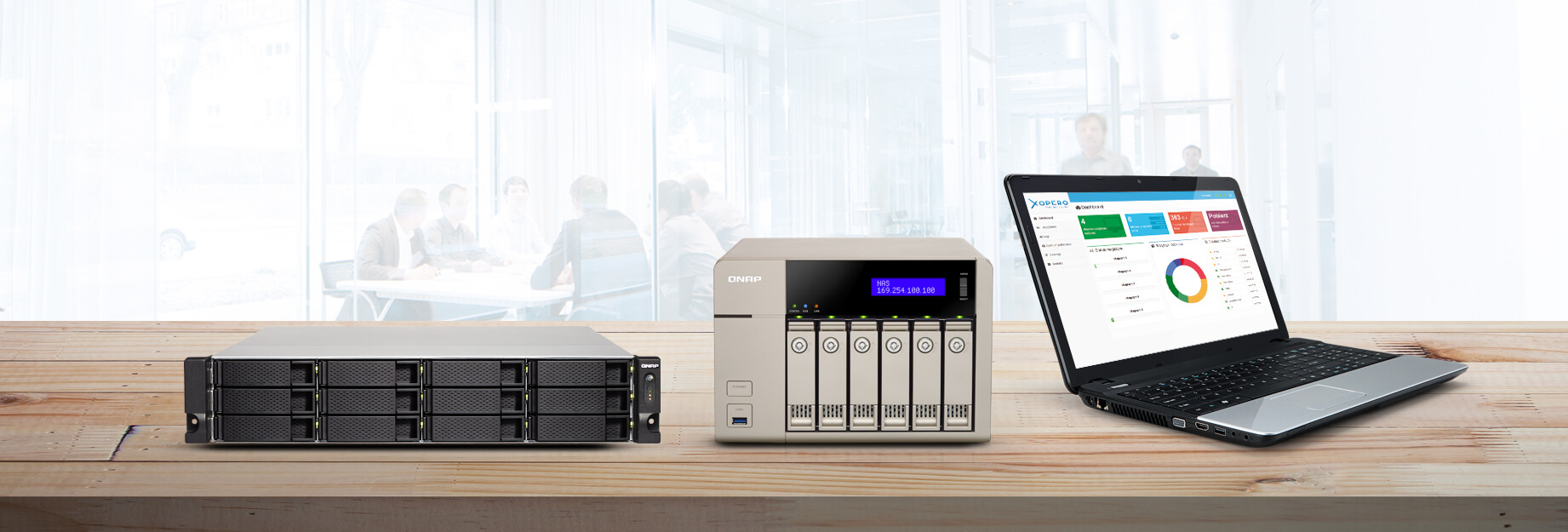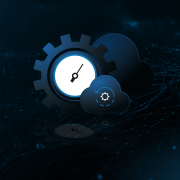
Dispelling the Myths About Cloud Backups
Cloud computing technologies, especially in SaaS model (Software as a Service), are beginning to play an increasingly important role in the corporate reality. With their popularisation, entrepreneurs are also beginning to wonder whether it is worth to move other key business processes to the cloud. Today, cloud backup is among the most frequently considered options. But this immediately raises some concerns – is this a reasonable solution to the problem?
Many myths have arisen around clod backup. Two of the most important include concerns about the security of data stored in the cloud, and doubts about the speed of backing up and potential disaster recovery. We should also note that users commonly confuse cloud storage/data synchronisation with backup in cloud computing environments. So let’s look at all the above myths and try to dispel these concerns.
Cloud Backup
Today, almost all cloud service providers offer their customers the ability to backup data in the cloud. What’s more, all the major backup application developers offer versions of their software that run either directly in the cloud environment or allow users to store backups in the cloud.
In terms of functionality – regardless of the software version used – performing a backup in which the protected data will be stored in the cloud (not locally), e.g. on a NAS, is in no way different from traditional backup methods. The same rule applies to the process of defining backup policies, backup types or schedules for individual servers or workstations. The only difference is the location of data storage – at the backup service provider, rather than locally, on the company’s premises.
What’s important, especially for smaller businesses, cloud backup provides a very high degree of data security without the need for any expensive investments. The backup service provider not only offers cloud space for securing data, but also provides the necessary backup tools and professional support. All of these features are provided on a subscription basis, that is as part of OPEX (operating expenditures) associated with the current maintenance of IT systems. In other words, instead of investing in their own solutions, companies can subscribe to a ready-made backup service tailored specifically to their needs.
Safety First
The issues of storing and accessing backup data in the cloud are directly linked to the safety of such data. Of course, we are talking about two types of security – technology and business. As for technological issues, the most important is the need to create a secure communication channel to handle the backup data stream. Secondly, it must be also possible to encrypt the stored data, which includes processing of sensitive and often confidential/secret corporate information. Thirdly, when deciding to backup data in the cloud, we must also be sure that all the protocols used in the process of backup creation are safe, and that the backup service provider holds appropriate certificates for securing data. We must also have the possibility to perform data protection audits.
Doubts of business nature can be dispelled by asking and answering the following question: what solution you should choose when you suspect that your data should remain in the country for business and legal reasons? If you have any doubts, choose a service provider whose cloud is located in your country.
You should also consider the issue of data availability – you need to check if the availability degree guaranteed in an SLA (Service Level Agreement) meets our expectations, and what RPO and RTO parameters you can achieve. This includes, among others, checking the availability of the network connection of both the service provider and your own company.
If all of your business and technological safety requirements are met, then an additional advantage for a company using the cloud backup service will be the fact that the protected data are being stored off-site. As a result, even in case of fire or flood, you will be able to easily restore all the information from before such event. Moreover, the security of data stored in the cloud is supervised by employees who are dealing with such matters on a daily basis. In this way, the risk of losing the backed up data is lower compared to self-backups made within the company.
How Does it Work in Practice?
Let’s look at the possibilities of Xopero Cloud Backup. It is an advanced cloud backup system that can be used to protect computers (Xopero Cloud Endpoint), servers, and virtual environments (Xopero Cloud Endpoint & Server). Its main advantage is the unlimited number of terminals that can be backed up and the fact that all the information sent over the Internet is encrypted with AES 256. In this way, you can rest assured that no unauthorised persons will be able to read your data. Both the encryption and compression of protected data takes place on the client side, which significantly increases the safety of the entire process and makes the data stored in the cloud completely useless for any third persons who would like to use it to obtain confidential corporate information.
And when it comes to data storage, Xopero uses two data centres located on the Polish territory. Both of them have independent network connections provided by several operators, which allows for high SLA availability and low RPO/RTO costs. It also guarantees high reliability and connection speed on the service provider side. In both data centres, the high security level is also ensured by the most modern alarm systems, physical access control based on biometric readers, continuous monitoring, and state-of-the-art fire protection systems – not to mention our own backup systems, firewalls, intrusion detection mechanisms and more.
Unlike a few years ago, the price of cloud backup is no longer a huge obstacle. Depending on your subscription, you can have various capacities for backup storage, with the ability to extend it at any time when necessary. For example, the price of an annual Xopero Cloud Endpoint subscription in the basic version is 999 PLN net.
Faster and Faster
When discussing the data centres used to physically store cloud backups, we also mentioned their independent Internet connections provided by several operators. In this way, we also dispelled the second myth, which is associated with the speed of creating backups and potential disaster recovery.
In this respect, cloud data centres are extremely fast and reliable. Data is replicated between different locations, and transmitted to and from the client using the fastest possible connection. The files are transmitted from the data centre that provides the highest reliability and transmission speed at any given moment. What’s more, Internet connection used for data backups relies almost entirely on fast fibre optic systems, so you don’t need to worry about slow backup caused by the service provider.
In fact, any problems with cloud backup speeds you may encounter can be only associated with the slow Internet connection at your own or your service provider’s location. Fortunately, the competition among Internet providers is now so large that you can easily find a company that will provide you the required bandwidth and target transmission speed.
Backup vs. Cloud Storage
At the end, it is worth paying attention to another issue: the mistaken belief that cloud storage and cloud backup are the same thing. Cloud storage services, provided by Dropbox or Google Drive, only allow you to store backup copies and archived data in the cloud, that is outside your company. They do not protect the company PCs or servers (and the data stored on such devices) against failure.
Archiving, backup and emergency backup are three different concepts. The first includes moving infrequently used data (such as archived company data from previous years) to another location or media – in our case, the cloud. Of course, users need to have access to such data, but this access does not have to be immediate. Backup, on the other hand, serves as an additional copy of data which is being processed by the company, but the backup itself is placed in another location for security reasons.
Backup includes the concepts of data synchronisation and replication. Replication involves simply copying files to various locations, and synchronisation is a process of ensuring that both backup and original files are always the same and as current as possible. In this way, the user, regardless of the file location they are using (local or remote, on a tablet or in the cloud), will always work on the most recent data and the latest, current version of the document.
Synchronization mechanisms are an integral part of cloud storage services. They are designed to ensure that all files and data are always up to date. This is particularly important in situations where we process data without Internet access – when we connect our computer to the network, all changes must be immediately noticed and synchronised between all the other file copies so they always have the same content and the most current information in all locations.
The last concept is emergency backup. This means a specially prepared backup – which in our case is stored in the cloud – that includes all the currently processed company data. This copy is made for security reasons. In the event of failure, virus attack, data encryption by ransomware, accidental deletion, incorrect modification, or other random causes leading to the loss of information, you can rapidly restore the status of your IT system and data saved before the last backup.
It should be emphasised that the backup process does not create file copies as such. The backup software prepares special data packets which – as in the case of Xopero – are additionally encrypted before placing in the designated location (such as cloud). What’s important, the data prepared by the backup software, just like any other type of data, can be easily archived or copied.
Here we come to yet another mistakenly understood concept related to the safety of data created by applications in the SaaS model or, more broadly, applications that are using cloud to store their data. For example, most users of Office 365 believe that Microsoft protects their data on its side. Of course, in case of failure of Microsoft’s data centre, we will still have access to our data – unless we delete or accidentally overwrite them, in which case we will lose such access after a certain, predefined amount of time. This means that the data from SaaS applications should be also protected by creating backups, but that’s a topic for a whole different article.







